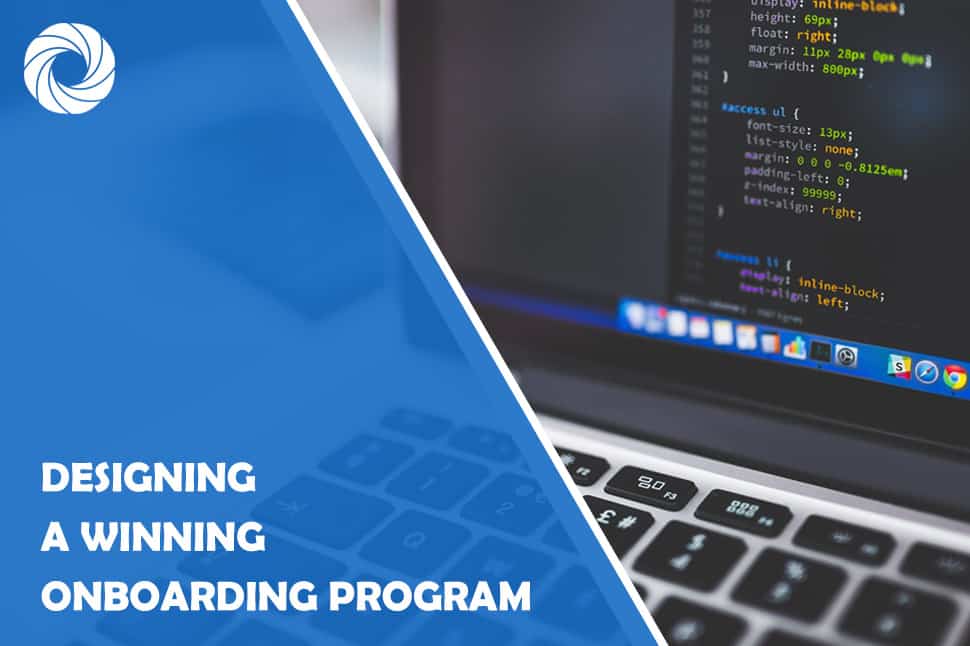When it comes to welcoming team members, a well-designed onboarding program can make a significant impact. By offering training and valuable resources and creating a supportive environment, organizations can ensure that their employees start off strong. Crafting an onboarding program requires planning and consideration of your organization's goals, values, and unique attributes. By setting expectations, personalizing approaches, providing mentorship opportunities, and fostering a welcoming and inclusive culture – you can create a remarkable onboarding experience that leads to long-term employee success.
In this guide, we will explore strategies you can employ to optimize your onboarding program effectively that boosts employee engagement and fosters long-term retention.
The initial step in any onboarding program is establishing expectations. An orientation session should provide hires with an understanding of the organization's mission, vision, and values. It is crucial to outline performance expectations and define success metrics from the start. This clarity forms the basis for building employee commitment and aligning them with goals.
2. Customize Onboarding Based on Needs
Recognizing that each employee brings strengths and abilities and tailoring the onboarding process to individual needs can significantly enhance their engagement. Organizations can identify areas where additional support or training might be necessary by conducting assessments or surveys during the pre-employment phase. This approach showcases a dedication to nurturing the growth of each employee and cultivating a sense of worth within the organization.
3. Implementing Mentorship Programs
One strategy for ensuring a seamless transition for new hires is to pair them with experienced mentors from within the company. These mentors can assist in bridging any knowledge gaps and provide guidance during their days or weeks on the job. Mentorship programs greatly enhance integration, offering personalized attention and support networks that are crucial for job satisfaction.
4. Providing Engaging Training Opportunities
Taking steps to engage hires beyond orientation activities sets a positive tone right from the start of their journey with your company. Consider incorporating workshops or e-learning modules that focus on building skills specific to their roles. By promoting learning and development, employees will feel valued and motivated to contribute their best to the organization.
5. Promoting Collaboration and Communication
6. Continuously Stay in Touch with Employees
The onboarding process goes beyond the orientation phase; it should be an ongoing effort that extends well beyond the first few weeks of employment. Regular check-ins with new hires are crucial for managers to address any concerns or challenges. This practice helps employees feel listened to, supported, and confident in their roles by providing assistance whenever needed.
7. Measure Success and Seek Input from Employees
To consistently improve your onboarding program, it's important to evaluate its effectiveness. Collect feedback from employees through surveys. Focus groups to gain insight into what aspects of the program are working well and which areas can be further improved or adjusted. Incorporating employee input into program enhancements demonstrates a company's commitment to ensuring employee success.
8. Foster a Welcoming and Inclusive Environment
Creating an inclusive environment is essential for the success of any onboarding program. By promoting diversity and inclusivity, organizations cultivate an atmosphere where all employees feel valued, respected, and embraced. To achieve this goal, consider implementing the following strategies:
- Provide training on diversity and unconscious bias to ensure that all employees understand the significance of fostering a workplace.
- Honor the cultural backgrounds of your employees by celebrating various traditions and events throughout the year.
- Highlight the value of inclusivity by sharing the success stories of employees from different backgrounds.
- Creating an environment that promotes acceptance fosters collaboration, sparks innovation, and boosts employee engagement.
- It also improves retention rates as employees are likelier to stay in a workplace that values individuality.
In conclusion
Remember that developing an onboarding program goes beyond paperwork or ticking boxes; it's about building meaningful connections with new hires while equipping them with the knowledge and resources necessary for their growth within your company. By implementing these strategies, organizations can establish a foundation for employees' development while ensuring their commitment to shared objectives. Taking the time to develop an onboarding program will result in benefits, such as higher employee satisfaction, improved productivity, and, ultimately, greater overall success for your business.
